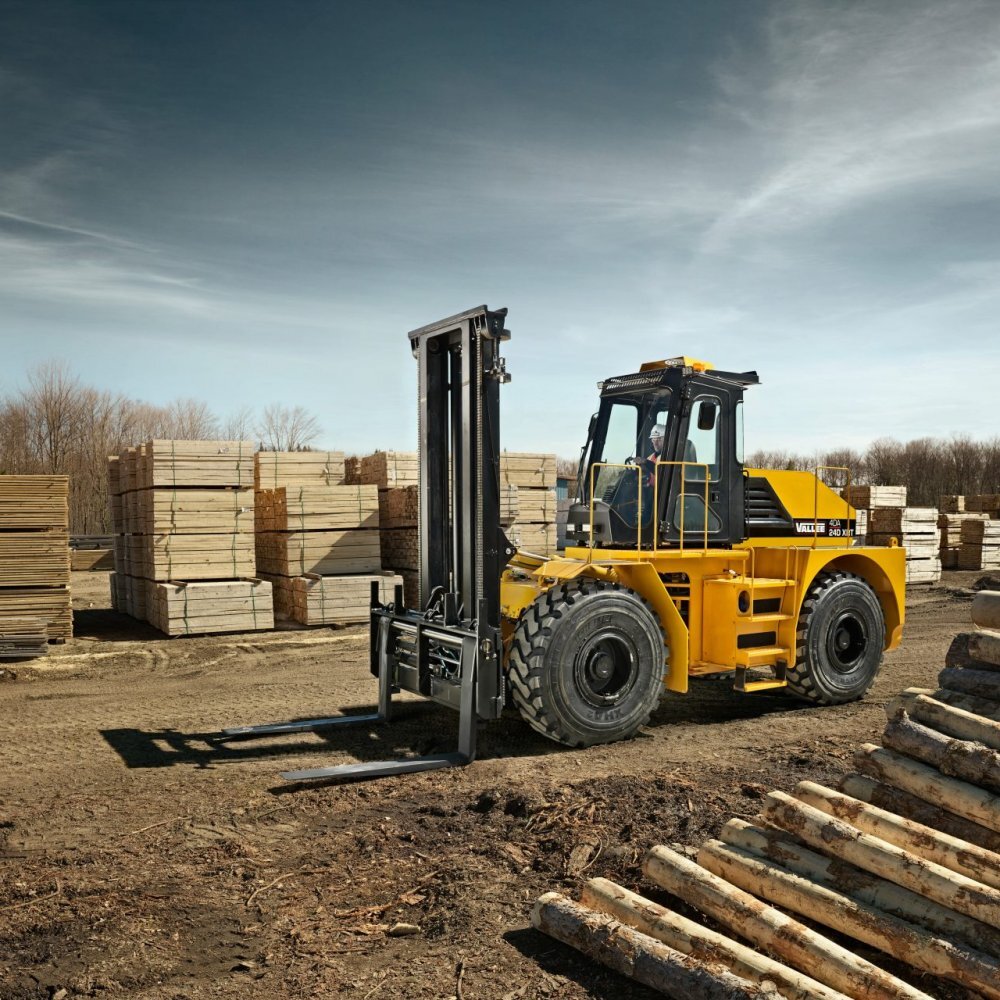At Vallée, the health and safety of forklift users are among our top priorities. The Occupational Safety and Health Administration, or OSHA, reports approximately 85 fatal accidents and 34,900 serious injuries involving forklifts annually in the United States alone. These unfortunate events for workers are too frequent. They also harm operations and the reputation of companies. Discover the advice of your forklift specialist to reduce accident risks.

Training: A Key Element
The results of studies by the American federal government agency OSHA provide an idea of the levers that can be activated to reduce forklift accident risks. Intensifying forklift operator training is one of the first areas of improvement. Many forklift accidents can be avoided by better learning the necessary good practices for their use.
Why Train Forklift Operators?
According to the American agency, the knowledge, skills, and abilities to safely operate a forklift are not innate. OSHA thus requires that forklift operators be properly trained to use this tool, which improves productivity and efficiency at work. Using a forklift without training is dangerous and can even be fatal for the operator and other employees working in the same intervention area. A significant number of accidents are attributed to insufficiently trained operators.
What Are the Positive Impacts of Training?
Training can, for example, prevent or reduce the severity of an accident related to the stability of a forklift carrying a high load. Through adequate and complete learning, the operator understands that it is essential to keep the load as low as possible to increase the stability of their vehicle and prevent accidents that could cause it to tip over. Even if the operator ignores this rule and the vehicle tips over, injuries are usually minor if they stay in the vehicle instead of jumping out.
OSHA estimates that implementing stricter training policies in companies could prevent about 70% of forklift accidents in the United States. Particular attention must be paid to learning the controls, instrumentation, steering and visibility, capacity, and stability limits.
Training must also include different aspects of operating the vehicle, such as safety rules on the intervention site or depending on the type of work to be performed. Operators are thus sensitized to systematically pay attention to various variables such as the condition of surfaces, load handling, pedestrian traffic, or aisle width when using a forklift.
What Are the Most Common Forklift Accidents?
Using a forklift can lead to several categories of accidents:
Collisions
The most common forklift accident is a collision. The accident can involve a collision between the forklift and other vehicles, pedestrians, infrastructure, or objects. The consequences of a crash can be numerous, causing bodily injuries, building damage, and damage to goods or other vehicles. Collisions occur mainly due to excessive speed, poor visibility, or careless and inattentive maneuvers. Many collisions are also due to inadequate workplace layouts, particularly a need for more distinction between vehicle traffic and pedestrian areas.
Forklift Tip-Overs and Overturns
This accident often occurs when the forklift carries an unbalanced load, moves on unstable terrain, or makes a sharp turn at high speed. The vehicle can then tip forward or overturn sideways. The repercussions can be severe, including injuries to the operator or nearby people and damage to the forklift and the work environment.
Load Falls and Falls from Height
Forklift accidents related to transported loads can also occur. Poor load securing, operator error, or a forklift defect can cause an accident during lifting, transporting, or stacking goods on the vehicle. Load falls pose a significant risk to people and property near the forklift.
Inappropriate use of the forklift can also cause accidents. Some users, for example, develop the bad habit of standing on the forks of a forklift to be lifted to a high area. Unfortunately, falls can occur since the user is not secured.

Safety Technologies: An Effective Prevention Solution
Technological advancements offer innovative solutions to enhance forklift safety and significantly reduce accident risks. Integrating safety technologies in warehouses and on forklifts creates a safer and more efficient work environment. Safety technology solutions include:
Blue Light
This device is fixed to the forklift and projects a blue light on the ground to warn pedestrians and other occupants in the work area when it approaches. This solution reduces the risk of collisions between forklifts and pedestrians, particularly in areas with limited visibility.
SEnS+ Detection System
This detection device uses ultrasound to identify obstacles and people in the forklift’s blind spots. It alerts the operator with auditory and visual signals when obstacles are detected.
360° Bird-View Camera
This solution offers a panoramic view of the area surrounding the forklift. The 360° Bird-View Camera allows operators to visualize their immediate environment better and maneuver safely, especially in confined or crowded spaces.
SpotME Solution
This auditory and visual warning system alerts pedestrians to the presence of a nearby forklift and signals its approach.
Load Weight Indicator
This device informs the operator in real time of the weight of the load being lifted. It warns them if they exceed the maximum authorized weight, preventing potential incidents due to overloading.

Conclusion
Forklift accidents can cause significant human and material damage, costly production stops, and delivery delays. Investing in technological safety systems and strengthening operator training can reduce these risks and improve the fluidity of your operations. At Vallée, we are convinced that safety and operational efficiency go hand in hand. We are constantly working on developing safer and more efficient forklifts and are committed to supporting our clients in implementing best practices in safety.



